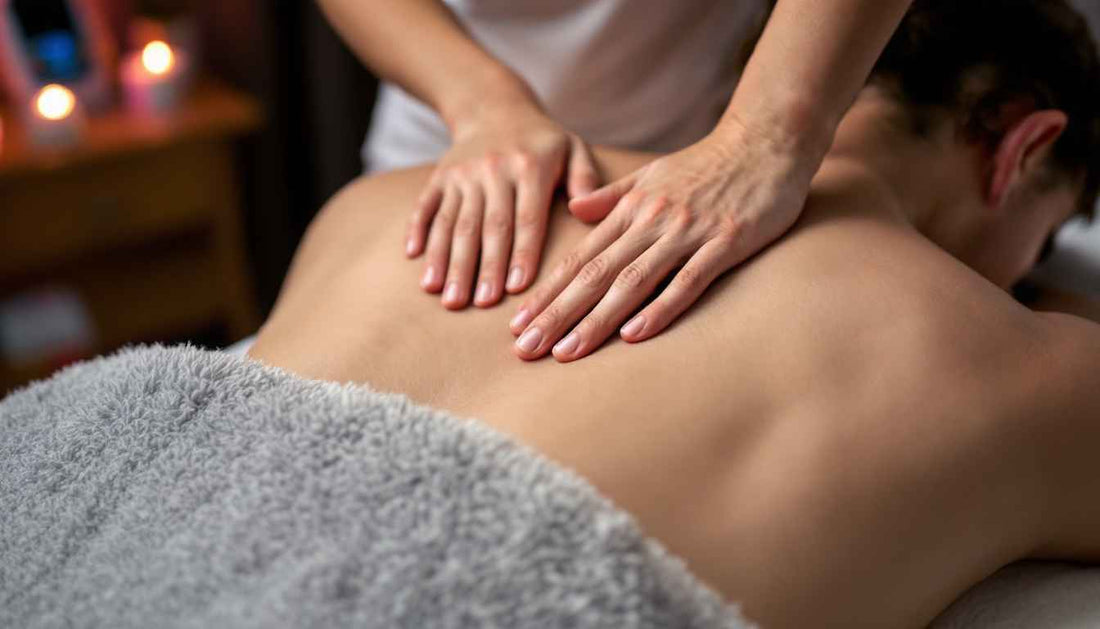
Massage Therapy for Fibromyalgia: Gentle Techniques and Helpful Tools
Share
Living with fibromyalgia means dealing with chronic pain, fatigue, and tenderness across the body — often without visible cause. Massage therapy for fibromyalgia offers a soothing, drug-free way to manage these symptoms. When done with the right techniques and tools, it can ease muscle stiffness, improve sleep, and promote emotional well-being. In this guide, we’ll explore the safest massage strategies and tools to help you feel better, every day.
What Is Fibromyalgia?
Fibromyalgia is a chronic condition characterized by widespread pain, fatigue, and sensitivity to touch. It can also cause sleep issues, brain fog, and anxiety. While the exact cause remains unclear, experts believe it involves how the brain processes pain signals.
Massage therapy has emerged as a promising complementary treatment for fibromyalgia by helping the nervous system relax and muscles recover.
How Massage Helps Fibromyalgia Symptoms
- Reduces pain sensitivity
- Enhances blood and lymph flow
- Loosens tight muscles
- Decreases anxiety and improves mood
- Supports better sleep quality
Unlike deep tissue massage, fibromyalgia massage requires a lighter touch and thoughtful techniques.
Best Massage Techniques for Fibromyalgia Relief
1. Gentle Swedish Massage
Involves long, flowing strokes that help relax the nervous system without triggering pain.
Tool Tip: Use a low-intensity massage gun with a soft head for similar strokes.
2. Myofascial Release
Targets fascia (the connective tissue around muscles). It helps reduce stiffness and restore movement.
Use At Home: Apply light pressure with a soft foam roller.
3. Manual Lymphatic Drainage (MLD)
Encourages lymphatic flow, reducing swelling and detoxifying tissue — ideal for fibromyalgia fatigue.
Tip: Always use feather-light pressure in slow, rhythmic movements.
4. Trigger Point Therapy (Modified)
Avoid aggressive pressure. Instead, use gentle fingertip or tool-based pressure to reduce referred pain.
Tool: Gentle trigger point balls wrapped in soft fabric.
Tools That Support Fibromyalgia Massage
- Gentle Massage Guns: Look for ones with low vibration settings.
- Heated Massage Pads: Soothe sore muscles before or after sessions.
- Low-Density Foam Rollers: Great for self-myofascial release without pain.
- Essential Oils (Lavender, Eucalyptus): Enhance relaxation.
- Cushion Support Systems: Prevent pressure point irritation.
Self-Massage Tips for Fibromyalgia
- Use circular motions on shoulders, arms, and thighs.
- Limit sessions to 10–15 minutes to avoid overstimulation.
- Apply heat before massage to prepare the body.
- Hydrate afterward to flush out toxins.
Related Articles
- Self-Myofascial Release Techniques
- Trigger Point Therapy Techniques
- Massage Therapy and Stress Relief
FAQs
Is massage good for fibromyalgia?
Yes, gentle massage can help relieve fibromyalgia symptoms such as pain, fatigue, and sleep disturbances without medication.
What type of massage is best for fibromyalgia?
Swedish massage, lymphatic drainage, and gentle myofascial release are most effective and least likely to trigger flare-ups.
Can massage make fibromyalgia worse?
Yes, deep pressure or incorrect techniques can worsen pain. Always opt for gentle, slow methods and consult a trained therapist.
How often should someone with fibromyalgia get a massage?
Once or twice a week is ideal for managing symptoms, but even short self-massage sessions can be beneficial daily.
Final Thoughts
Massage therapy for fibromyalgia is a safe, natural way to manage daily pain and fatigue. With the right approach and proper tools, you can take control of your comfort and build a wellness routine that fits your lifestyle.
Free Gift: Fibromyalgia Massage Toolkit
Download our "Gentle Relief Kit for Fibromyalgia" — featuring a guide to at-home techniques, therapist-approved tools, and a 7-day massage planner.
